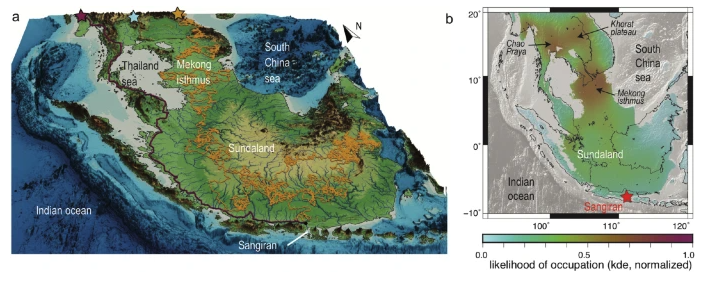
The migration of Homo erectus in Southeast Asia during Early Pleistocene is cardinal to our comprehension of the evolution of the genus Homo. However, the limited consideration of the rapidly changing physical environment, together with controversial datings of hominin bearing sites, make it challenging to secure the robust timeline needed to unveil the behavior of early humans. Here, we reappraise the first appearance datum of Javanese H. erectus by adding the most reliable age constraints based on cosmogenic nuclides 1010Be and 2626Al produced in situ to a compilation of earlier estimates. We find that H. erectus reached Java and dwelled at Sangiran, Java, ca. 1.8 Ma. Using this age as a baseline, we develop a probabilistic approach to reconstruct their dispersal routes, coupling ecological movement simulations to landscape evolution models forced by reconstructed geodynamic and climatic histories. We demonstrate that the hospitable terra firma conditions of Sundaland facilitated the prior dispersal of hominins to the edge of Java, where they conversely could not settle until the Javanese archipelago emerged from the sea and connected to Sundaland. The dispersal of H. erectus across Sundaland occurred over at least tens to hundreds kyr, a time scale over which changes in their physical environment, whether climatic or physiographic, may have become primary forcings on their behavior. Our comprehensive reconstruction method to unravel the peopling timeline of SE Asia provides a novel framework to evaluate the evolution of early humans.
![]()
